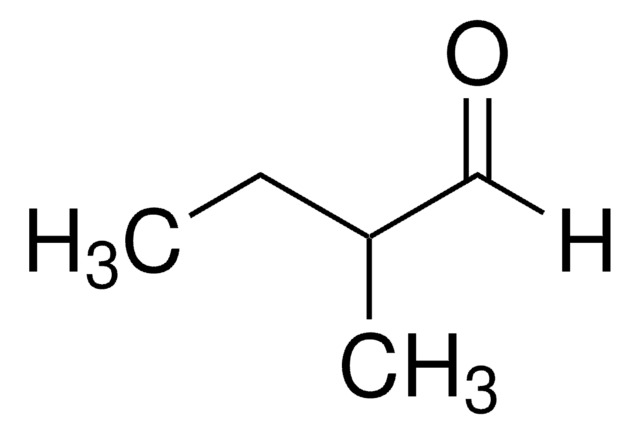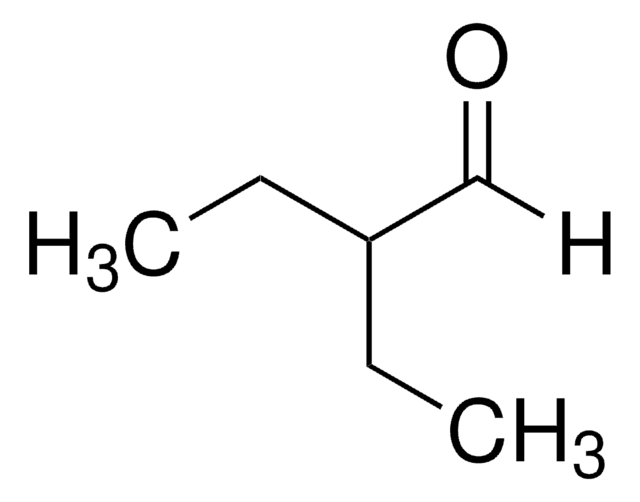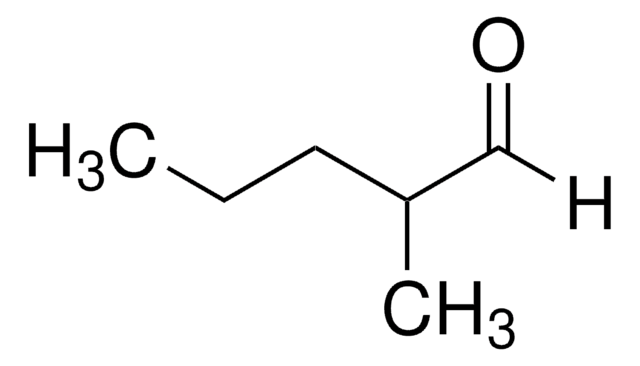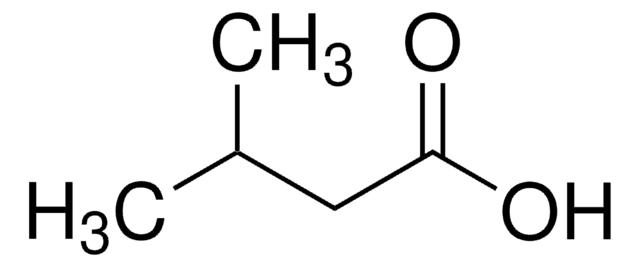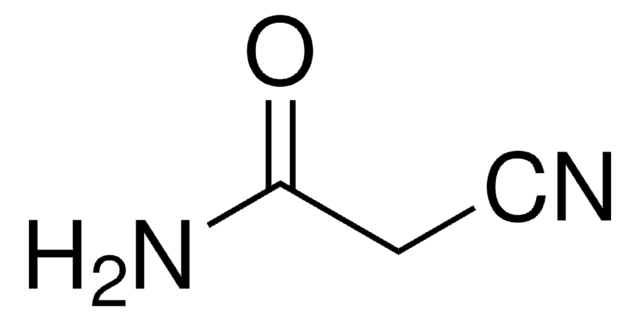146455
Isovaleraldehyde
97%
Sinonimo/i:
3-Methylbutanal, 3-Methylbutyraldehyde, NSC 404119
About This Item
Prodotti consigliati
Densità del vapore
2.96 (vs air)
Livello qualitativo
Tensione di vapore
30 mmHg ( 20 °C)
Saggio
97%
Forma fisica
liquid
Temp. autoaccensione
464 °F
Indice di rifrazione
n20/D 1.388 (lit.)
P. eboll.
90 °C (lit.)
Solubilità
alcohol: miscible
diethyl ether: miscible
water: slightly soluble
Densità
0.803 g/mL at 25 °C (lit.)
Organolettico
pungent
Temperatura di conservazione
2-8°C
Stringa SMILE
[H]C(=O)CC(C)C
InChI
1S/C5H10O/c1-5(2)3-4-6/h4-5H,3H2,1-2H3
YGHRJJRRZDOVPD-UHFFFAOYSA-N
Cerchi prodotti simili? Visita Guida al confronto tra prodotti
Categorie correlate
Descrizione generale
Isovaleraldehyde is an attractant and its interaction with zoospores of the fungus Phytophthora palmivora has been studied by binding techniques.
Applicazioni
Avvertenze
Danger
Indicazioni di pericolo
Consigli di prudenza
Classi di pericolo
Aquatic Chronic 2 - Eye Irrit. 2 - Flam. Liq. 2 - Skin Sens. 1 - STOT SE 3
Organi bersaglio
Respiratory system
Codice della classe di stoccaggio
3 - Flammable liquids
Classe di pericolosità dell'acqua (WGK)
WGK 2
Punto d’infiammabilità (°F)
32.9 °F - closed cup
Punto d’infiammabilità (°C)
0.5 °C - closed cup
Dispositivi di protezione individuale
Eyeshields, Faceshields, Gloves, type ABEK (EN14387) respirator filter
Scegli una delle versioni più recenti:
Possiedi già questo prodotto?
I documenti relativi ai prodotti acquistati recentemente sono disponibili nell’Archivio dei documenti.
I clienti hanno visto anche
Protocolli
-Tolualdehyde; Valeraldehyde; Isovaleraldehyde
Il team dei nostri ricercatori vanta grande esperienza in tutte le aree della ricerca quali Life Science, scienza dei materiali, sintesi chimica, cromatografia, discipline analitiche, ecc..
Contatta l'Assistenza Tecnica.
